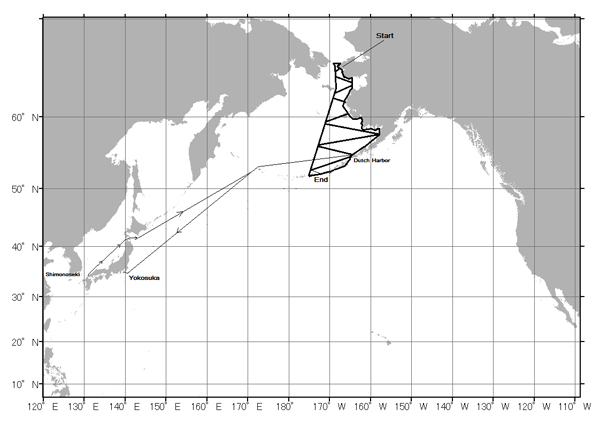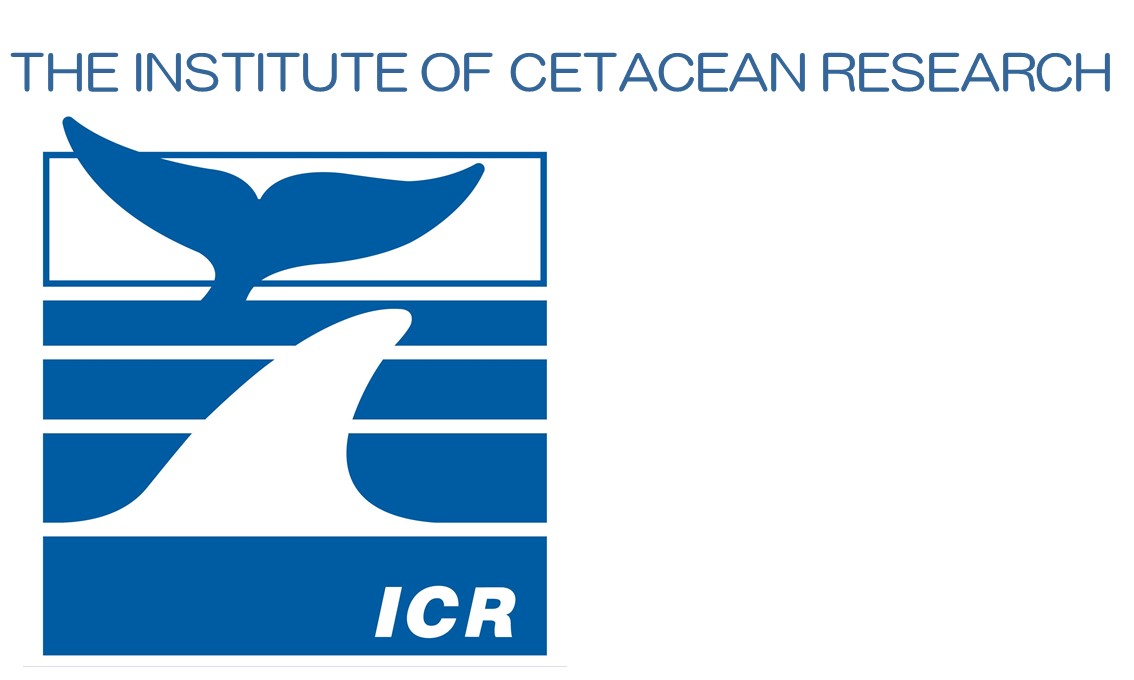Completion of the 2017 IWC/Japan Joint Cetacean Sighting Survey Cruise in the North Pacific - IWC-POWER
September 25, 2017
1. Background
IWC-POWER, the IWC/Japan Joint Cetacean Sighting Survey in the North Pacific, is a research program commonly known as the Pacific Ocean Whale and Ecosystem Research (POWER) under auspices of the International Whaling Commission (IWC).
IWC-POWER is based and applies the achievements, know-how and expertise acquired during the most successful and highly appraised international collaborative research effort conducted under the auspice of the IWC, the IWC-SOWER (International Whaling Commission-Southern Ocean Whale and Ecosystem Research, 1996/1997-2009/2010) research program which ended in 2010.
The 2017 survey was the eighth cruise since IWC-POWER began in 2010. The research plan of this program reflects the major research agenda of the IWC Scientific Committee. During the first seven cruises, a number of fin, sei, Bryde's, humpback and sperm whales were sighted in the research area, where a large scale sighting survey had not been conducted for more than a half century.
2. Outline of the 2017 Research Cruise
The IWC-POWER program is conducted collaboratively by the IWC and the Government of Japan. The IWC Scientific Committee has developed the research program, and an actual survey cruise plan was jointly planned by associated institutions such as the National Research Institute of Far Sea Fisheries (Fisheries Research Agency of Japan) and Alaskan Fisheries Science Center, NOAA/NMFS, USA under guidance of the IWC-POWER Steering Group (Convener, Dr. Hidehiro Kato, Professor of Tokyo University of Marine Science and Technology, Japan), which was established under auspice of the IWC Scientific Committee. The Institute of Cetacean Research, under the commission of the Fisheries Agency of Japan, has completed the survey cruise. Followings are summary of research cruise plan and its results. For the 2017 cruise, the acoustic survey was introduced for the first time to acoustically monitor for the presence of marine mammals, with particular importance for North Pacific right whale localisations. Port of the Dutch Harbor, Alaska, USA was used for shipping, refuelling and boarding international researchers.
2.1 Main objectives
(1) estimation of sei, humpback and gray whales abundance (and other species where possible);
(2) collection of information on stock structure, particularly biopsy samples, with priority given to sei, humpback and gray whales (and other species);
(3) completion of coverage of the northern range of fin whales following on from the IWC-POWER cruises in 2010-12; and
(4) collection of photo-identification data and biopsy samples for rare species encountered, especially North Pacific right whales.
(5) essential information for the development of the medium-long term international programme in the North Pacific in order to meet the Commission's long-term objectives.
2.2 Research Cruise Period
From July 3 to September 25, 2017 (85 days).
2.3 Research Area
The research area is north of the Aleutian Islands, south of 66°N, between longitudes 175°W and 157°W (US-EEZ)..

Fig.1 Research area and trackline for the 2017 IWC-POWER survey.
2.4 International Researchers
Koji Matsuoka (Cruise leader, Institute of Cetacean Research, Japan)
Jessica Crance (Alaskan Fisheries Science Center, NOAA/NMFS, USA)
Jessica Taylor (IWC nominated researcher, USA)
Isamu Yoshimura (IWC nominated researcher, Japan)
2.5 Research Vessel
Yushin-maru No.2 (747 ton, Captain Hidenori Kasai)
2.6 Total Distance Covered
1,990 nautical miles (about 3,685 km)
2.7 Main whale sightings (including transit surveys)
Fin whale: 145 schools; 198 animals
Humpback whale: 136 schools; 165 animals
Common minke whale: 17 schools; 20 animals
Gray whale: 15 schools; 22 animals
North Pacific right whale: 7 schools; 15 animals
Sperm whale: 25 schools; 33 animals
Killer whale: 32 schools; 134 animals
Dalli Type Dall's porpoise: 29 schools; 149 animals
2.8 Results of sample collections etc.
(1) Photo identification data
Gray whale: 14 animals
North Pacific right whale: 12 animals
Humpback whale 34 animals
Fin whale 55 animals
Killer whale 56 animals
These photographs are valuable information to study life history and migration patterns of each species.
(2) Collection of biopsy samples
Fin whale: 28 animal
Humpback whale: 18 animal
Gray whale: 9 animals
North Pacific right whale: 3 animals
Killer whale: 2 animals
These samples will be used for examination of stock structure of each species.
(3) Collection of acoustic data collection
A total of 240 sonobuoys were deployed for a total of 841:05:06 monitoring hours.




